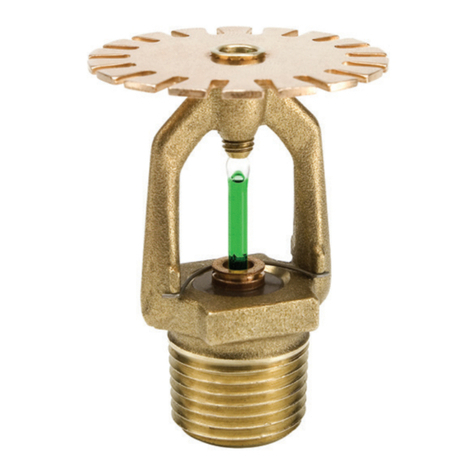
RME EAGLE User Manual Rain Master Irrigation Systems
Page ii Table of Contents
4.1.3 Programmable Operations Mode..................................................................................31
4.1.4 Programming Mode......................................................................................................31
4.2 KEYBOARD OPERATIONS..............................................................................................32
4.2.1 Function and Setup Keys..............................................................................................32
4.2.2 Data Entry Keys............................................................................................................32
4.2.3 Command Execution Keys ...........................................................................................33
5.0 FUNCTION AND EXECUTION KEY OPERATIONS........................................................34
5.1 PROGRAM FUNCTION KEY............................................................................................34
5.1.1 PROGRAM Clear.........................................................................................................35
5.2 WATER DAYS FUNCTION KEY......................................................................................35
5.3 STATIONS FUNCTION KEY.............................................................................................37
5.3.1 Stations and Watering Length.......................................................................................37
5.3.1.1 Conventional Station Programming......................................................................37
5.3.1.2 Cycle and Soak Programming...............................................................................39
5.3.1.3 Cycle and Soak Station Programming..................................................................40
5.4 START TIMES FUNCTION KEY......................................................................................42
5.4.1 Start Times and Automatic Program Overlap Protection.............................................43
5.5 QUICK STATIONS FUNCTION KEY...............................................................................45
5.5.1 Conventional Quick Station Programming...................................................................45
5.5.2 Cycle and Soak Quick Station Programming ...............................................................46
5.6 WATER % BUDGET FUNCTION KEY............................................................................47
5.7 MANUALLY ACTIVATED FUNCTIONS........................................................................49
5.7.1 MANUAL Program......................................................................................................49
5.7.2 MANUAL Station.........................................................................................................50
5.7.3 MANUAL Master Valve ..............................................................................................51
5.7.4 MANUAL System Check/Syringe Cycle.....................................................................52
5.8 SKIP DAYS FUNTION KEY..............................................................................................53
5.9 REVIEW FUNCTION KEY ................................................................................................55
5.10 CLEAR EXECUTION KEY..............................................................................................58
5.11 QUIT EXECUTION KEY ...........................................................................................58
5.12 ENTER EXECUTION KEY........................................................................................59
6.0 SETUP KEY OPERATIONS ...................................................................................................60
6.1 SET TIME OF DAY/DATE.................................................................................................61
6.2 MASTER VALVE (MV) .....................................................................................................63
6.3 TYPE OF MASTER VALVE ..............................................................................................63
6.4 PUMP ...................................................................................................................................64
6.5 STACK OR NO STACK......................................................................................................65
6.6 DELAY.................................................................................................................................66
6.7 SECURITY CODE...............................................................................................................67
6.7.1 Enabling Security Code ................................................................................................67
6.7.2 Disabling Security Code (LOCKED Controller)..........................................................68
6.7.3 Eliminating Security Code............................................................................................68
6.8 SENSOR...............................................................................................................................69
6.9 ALARM................................................................................................................................71
6.10 CYCLE AND SOAK..........................................................................................................71
6.11 ODD/EVEN WATERING CONTROL..............................................................................72




























